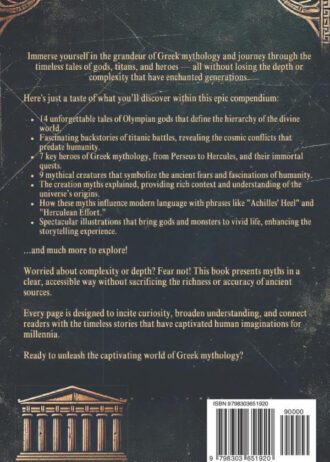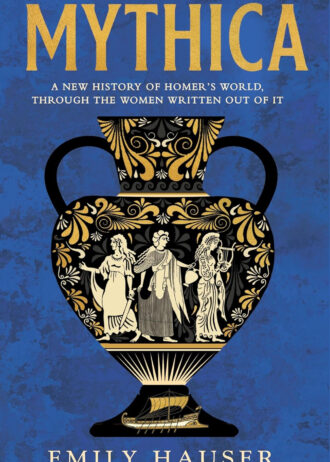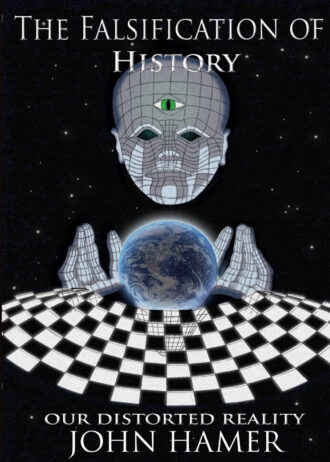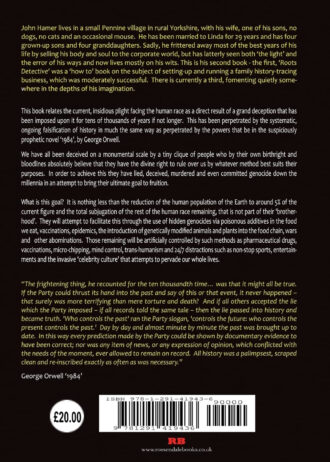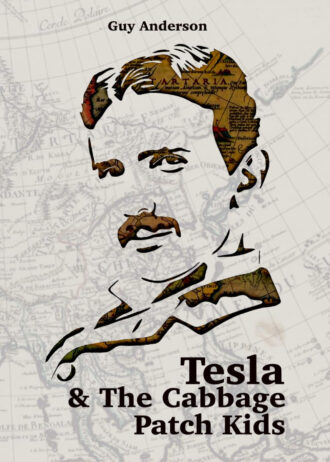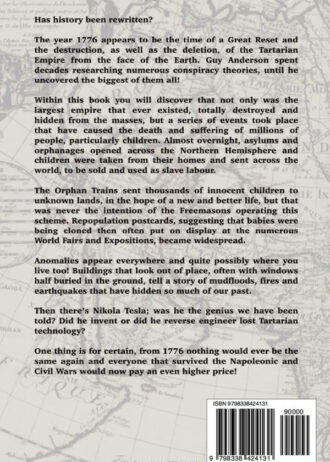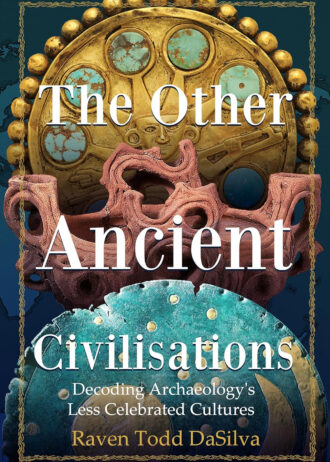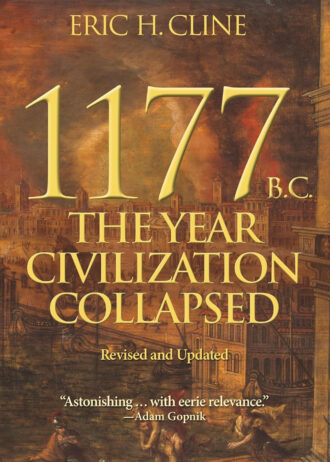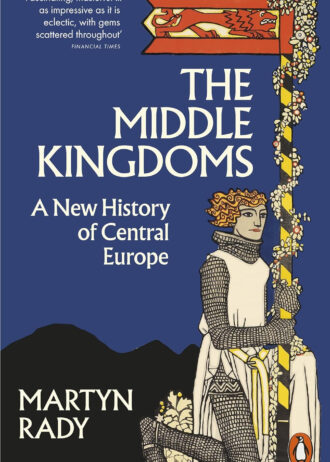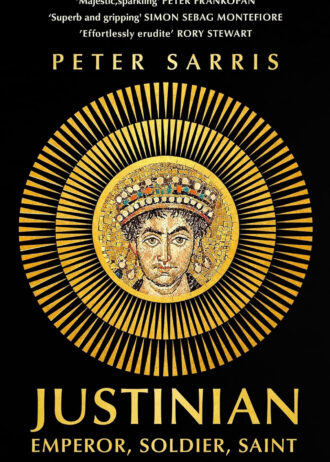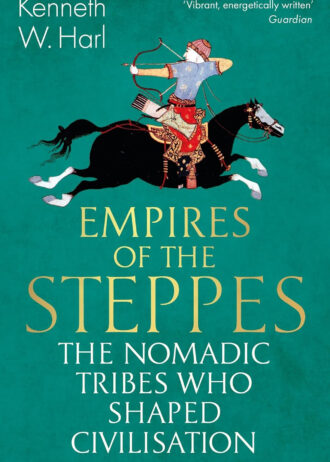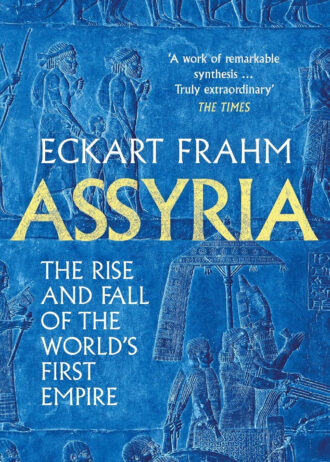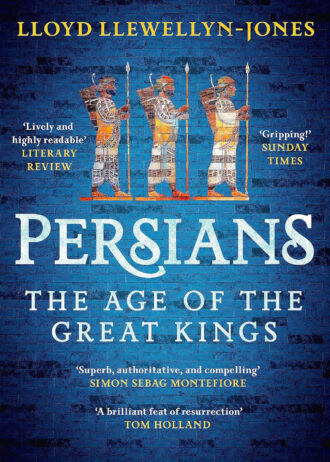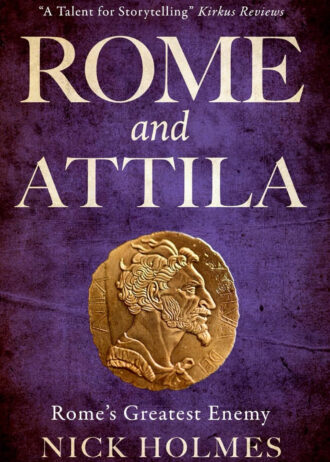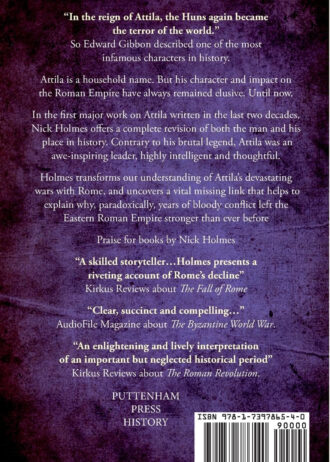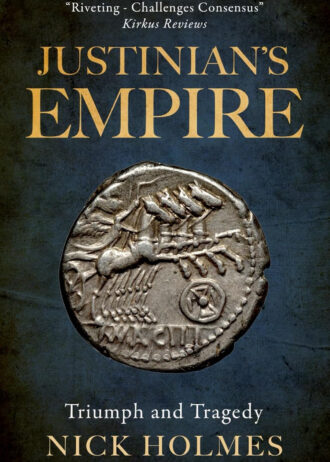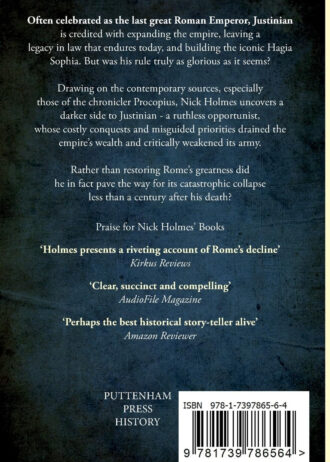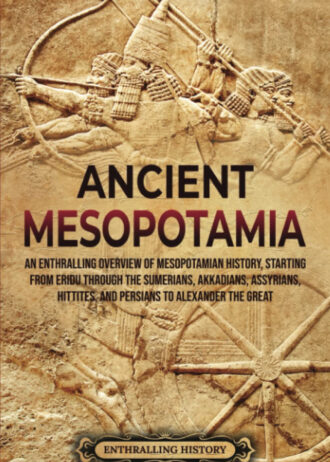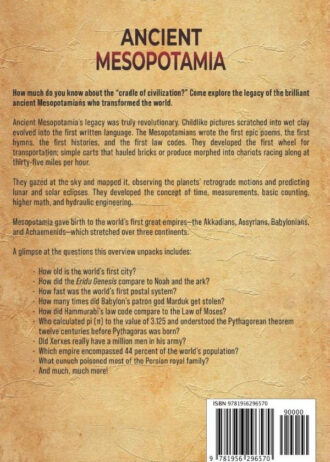Greek Mythology Unleashed: Discover the Epic Legends of Gods, Titans, Heroes, and Mythical Creatures that have Cultivated History in the Rich Pantheon of Ancient Greece.
£15.99Do the tales of ancient Greece leave you mystified, longing to unravel their mysteries?
Are you overwhelmed by the mythical names, places, and tales that weave a tapestry of enchantment and lessons?
Do you want to share these incredible stories with your family but struggle to make them accessible and engaging?
If so, you’re not alone. Many seekers of knowledge face the heft of ancient texts, knowing the value within but unsure how to unlock it for all ages.
But fear not, this book unveils the epic legends of the Greek pantheon with clarity and color, allowing everyone from children to adults to discover the thrill and power of these stories.
Here’s just a taste of what you’ll discover within this epic compendium:
- The 14 unforgettable tales of Olympian gods that define the hierarchy of the divine world.
- Fascinating backstories of titanic battles, revealing the cosmic conflicts that predate humanity.
- The 7 key heroes of Greek mythology, from Perseus to Hercules, and their immortal quests.
- 9 mythical creatures that symbolize the ancient fears and fascinations of humanity.
- The creation myths explained, providing rich context and understanding of the universe’s origins.
- How these myths influence modern language with phrases like “Achilles’ Heel” and “Herculean Effort.”
- Spectacular illustrations that bring gods and monsters to vivid life, enhancing the storytelling experience.
…and much more to explore!
Worried about complexity or depth? Fear not! This book presents myths in a clear, accessible way without sacrificing the richness or accuracy of ancient sources. It bridges the historical with the modern, making the experience enriching for all readers.
Every page is designed to incite curiosity, broaden understanding, and connect readers with the timeless stories that have captivated human imaginations for millennia.
Ready to unleash the captivating world of Greek mythology? Scroll up and click the “Add to Cart” button now to embark on your epic odyssey!
Mythica: A New History of Homer’s World, Through the Women Written Out of It
£19.65Did you love Madeline Miller’s Circe? Pat Barker’s The Silence of the Girls? Jennifer Saint’s Elektra? Natalie Haynes’ A Thousand Ships?
But did you ever wonder who the real women behind the myths of the Trojan War were?
Now award-winning classicist and historian Emily Hauser takes readers on an epic journey to uncover the astonishing true story of the real women behind ancient Greece’s greatest legends – and the real heroes of those ancient epics, Homer’s Iliad and Odyssey.
Because, contrary to perceptions built up over three millennia, ancient history is not all about men – and it’s not only men’s stories that deserve to be told . . .
In Mythica Emily Hauser tells, for the first time, the extraordinary stories of the real women behind some of the western world’s greatest legends. Following in their footsteps, digging into the history behind Homer’s epic poems, piecing together evidence from the original texts, recent astonishing archaeological finds and the latest DNA studies, she reveals who these women – queens, mothers, warriors, slaves – were, how they lived, and how history has (or has not – until now) remembered them.
A riveting new history of the Bronze Age Aegean and a journey through Homer’s epics charted entirely by women – from Helen of Troy, Briseis, Cassandra and Aphrodite to Circe, Athena, Hera, Calypso and Penelope – Mythica is a ground-breaking reassessment of the reality behind the often-mythologized women of Greece’s greatest epics, and of the ancient world itself as we learn ever more about it.
The Falsification of History: Our Distorted Reality
£21.56Tesla & The Cabbage Patch Kids: Exploring the lost Empire of Tartaria and the Reset of 1776
£12.99Mud-floods, fire and earthquakes destroyed a great deal of the empire and the civil and the Napoleonic wars killed-off many of its inhabitants. Those that survived were incarcerated within the newly established asylums and prisons, hidden away from those that now lived in the New World. Their children were taken and distributed to every major town and city, not just to be used as slave labour, but to repopulate too!
Centres of Healing became cathedrals and churches; technology that harnessed energy from the Aether was destroyed and then came the Industrial Revolution.
A repopulation program known as The Cabbage Patch Babies, produced thousands of human clones, that would grow up never knowing anything of the fallen empire.Then came Nikola Tesla, with inventions mirroring Tartarian technology, whose death would remain shrouded in mystery for all eternity.
Today we are living through another reset, at the hands of the descendants of the Anunnaki. This book serves as a stark warning of history repeating itself, with the hope of awakening as many people as possible, before it’s too late!
Guy Anderson
The Other Ancient Civilisations: Decoding Archaeology’s Less Celebrated Cultures
Discover Other Civilisations and Cultures With Rich and Unique Histories
“If Indiana Jones wrote a guidebook, it might mirror what Raven Todd da Silva has penned. The Other Ancient Civilisations gives life to the shadows of heroes and everyday people travelers walk in the footsteps of today.” —Forbes Magazine
Journey through 15,000 years of history and discover fascinating ancient civilisations and cultures that may have been overlooked in history class with Raven Todd DaSilva, award-winning scholar, archaeologist, and creator of the popular archaeology online educational platform Dig it With Raven.
#1 New Release in Archaeology and in Religious Antiquities & Archaeology
Lesser-known ancient civilisations and cultures. Go beyond the popular stories of Greece, Rome, Egypt, the Inca and the Maya, and uncover the rich diversity of people that are often overlooked. From the world’s first peace treaty to daring expeditions across the Pacific, learn about 20 ancient and historic cultures from around the world that have had monumental impacts on our modern world.
A more nuanced look at the ancient world. The Other Ancient Civilisations looks outside mainstream ancient civilisations and cultures and delves into astounding finds unearthed at archaeological sites around the world. Discover the archaeology that sheds light on the secret stories of the Nubians, Olmec, Xiongnu, Minoans, Akkadians, and many more. Each chapter delves beyond the rise and fall of each society, highlighting the lives of everyday peoples of the past. Discover who they interacted with and how they lived, and what we can learn from them.
How archaeologists decode ancient cultures from what they left behind. Packed with summaries of current archaeological evidence, detailed maps and striking images of astounding artefacts and archaeological sites, The Other Ancient Civilisations is an indispensable collection of fascinating stories and facts that have helped archaeologists change the way we understand history.
Inside discover:
- A more in-depth understanding of lesser-know ancient cultures from around the world
- An appreciation for the people who lived during these times and in these cultures—not just the great rulers and the monumental buildings left behind
- A realization that ancient people were not that different from who we are today
If you’ve read books such as The Forgotten Peoples of the Ancient World, The Lost World of The Old Ones, or 1177 B.C., you’ll love Raven’s The Other Ancient Civilizations.
After the Ice: A Global Human History, 20,000 – 5000 BC
£13.99A fantastic voyage through 15,000 years of history that laid the foundations for civilisation as we know it by award-winning science writer Steven Mithen.
Twenty thousand years ago Earth was in the midst of an ice age. Then global warming arrived, leading to massive floods, the spread of forests and the retreat of the deserts. By 5,000 BC a radically different human world had appeared. In place of hunters and gatherers there were farmers; in place of transient campsites there were towns. The foundations of our modern world had been laid and nothing that came after – the Industrial Revolution, the atomic age, the internet – have ever matched the significance of those events.
AFTER THE ICE tells the story of climate change’s impact during this momentous period – one that also saw the colonisation of the Americas and mass extinctions of animals throughout the world. Drawing on the latest cutting-edge research in archaeology, cognitive science, palaeontology, geology and the evolutionary sciences, Steven Mithen creates an evocative, original and remarkably complete picture of minds, cultures, lives and landscapes through 15,000 years of history.
1177 B.C.: The Year Civilization Collapsed: Revised and Updated (Turning Points in Ancient History)
£13.22A bold reassessment of what caused the Late Bronze Age collapse
In 1177 B.C., marauding groups known only as the “Sea Peoples” invaded Egypt. The pharaoh’s army and navy managed to defeat them, but the victory so weakened Egypt that it soon slid into decline, as did most of the surrounding civilizations. After centuries of brilliance, the civilized world of the Bronze Age came to an abrupt and cataclysmic end. Kingdoms fell like dominoes over the course of just a few decades. No more Minoans or Mycenaeans. No more Trojans, Hittites, or Babylonians. The thriving economy and cultures of the late second millennium B.C., which had stretched from Greece to Egypt and Mesopotamia, suddenly ceased to exist, along with writing systems, technology, and monumental architecture. But the Sea Peoples alone could not have caused such widespread breakdown. How did it happen?
In this major new account of the causes of this “First Dark Ages,” Eric Cline tells the gripping story of how the end was brought about by multiple interconnected failures, ranging from invasion and revolt to earthquakes, drought, and the cutting of international trade routes. Bringing to life the vibrant multicultural world of these great civilizations, he draws a sweeping panorama of the empires and globalized peoples of the Late Bronze Age and shows that it was their very interdependence that hastened their dramatic collapse and ushered in a dark age that lasted centuries.
A compelling combination of narrative and the latest scholarship, 1177 B.C. sheds new light on the complex ties that gave rise to, and ultimately destroyed, the flourishing civilizations of the Late Bronze Age―and that set the stage for the emergence of classical Greece.
The Middle Kingdoms: A New History of Central Europe
£13.59‘Fascinating, masterful … gems scattered throughout the book’ Peter Frankopan, Spectator
‘Quirkily original but also scholarly and authoritative, to be read for pleasure and serious reflection’ Telegraph
*The dramatic history of Europe’s shape-shifting centre, from the author of The Habsburgs*
Central Europe is not just a space on a map but also a region of shared experience – of mutual borrowings, impositions and misapprehensions. From the Roman Empire onwards, it has been the target of invasion from the east. In the Middle Ages, Central Europeans cast their eastern foes as ‘the dogmen’. They would later become the Turks, Swedes, Russians and Soviets, all of whom pulled the region apart and remade it according to their own vision.
Competition among Europe’s Middle Kingdoms yielded repeated cultural effervescences. This was the first home of the High Renaissance outside Italy, the cradle of the Reformation, the starting point of the Enlightenment, Romanticism, the symphony and modern nationalism. It was a permanent battleground too for religious and political ideas.
Most recent histories of Central Europe confine themselves to the lands in between Germany and Russia, homing in on Poland, Hungary, and what is now the Czech Republic. This new history embraces the whole of Central Europe, including the German lands as well as Ukraine and Switzerland. The story of Europe’s Middle Kingdoms is a reminder of Central Europe’s precariousness, of its creativity and turbulence, and of the common cultural trends that make these lands so distinctive.
Justinian: Emperor, Soldier, Saint
£7.01WINNER OF THE LONDON HELLENIC PRIZE
SHORTLISTED FOR THE RUNCIMAN AWARD
A Sunday Times, BBC History Magazine, and Evening Standard Book of the Year
‘Majestic, sparkling’ Peter Frankopan
‘Superb and gripping’ Simon Sebag Montefiore
‘Effortlessly erudite’ Rory Stewart
‘Masterful’ Anita Anand
‘Spectacularly good’ Dominic Sandbrook
The definitive story of the Roman Emperor who shaped modern times.
This groundbreaking biography gives us an intimate insight into Justinian, a man who, from the humblest beginnings, rose to become ruler of much of the known world achieving an almost god-like status. An emperor who infused even the most mundane tasks with spiritual significance. A gifted administrator obsessed with detail. A middle-aged lover who fell for a dancing girl, ruling with empress Theodora by his side for over twenty years. A brilliant military strategist who was never on the frontline. The challenges he faced – climate change, battles over culture and identity, the first recorded global pandemic – and many of the solutions he found still resonate with us today. His legacy remains all around us. In this tour de force, Sarris shows us that in all his complexity and contradictions Justinian was, in many ways, a very modern emperor.
Empires of the Steppes: The Nomadic Tribes Who Shaped Civilisation (Bloomsbury Publishing)
£12.09An epic history of how the so-called ‘barbarians of the steppes’ shaped the modern world.
‘A rollercoaster of historical narration’ History Today
‘This is a history of epic scope that brings together the empires of the steppe land with the caravan cities of the Silk Road and imperial China’ Martyn Rady, author of The Middle Kingdoms
‘A sweeping account of forty-five centuries of nomadic tribes’ Gillian Tett, Financial Times
‘Flips the script to present the booted, felt-capped, leather-trousered and kaftan-wearing nomads as the bearers of civilisation . . . Harl’s exhaustively researched book will ensure they rejoin the narrative of world history‘ Marc David Baer, Guardian
The barbarian nomads of the Eurasian steppes played a decisive role in world history, but their achievements have gone largely unnoticed. These tribes produced some of the world’s greatest conquerors: Attila the Hun, Genghis Khan and Tamerlane, among others. And their deeds still resonate today.
Indeed, these nomads built long-lasting empires, facilitated the first global trade of the Silk Road and disseminated religions, technology, knowledge and goods of every description that enriched and changed the lives of so many across Europe, China and the Middle East. From a single region emerged a great many peoples – the Huns, the Mongols, the Magyars, the Turks, the Xiongnu, the Scythians, the Goths – all of whom went on to profoundly and irrevocably shape the modern world.
In this enthralling new history, Professor Kenneth W. Harl draws on a lifetime of scholarship to vividly recreate the lives of these peoples from their beginnings to the early modern age. Their brutal struggle to survive on the steppes bred a resilient, pragmatic people ever-ready to learn from their neighbours. In warfare, they dominated the battlefield for over fifteen hundred years. Under charismatic rulers, they could topple empires and win their own.
Assyria: The Rise and Fall of the World’s First Empire (Bloomsbury Publishing)
£12.55The first comprehensive account of the rise and fall of what historians consider to be the world’s very first empire: Assyria
‘A work of remarkable synthesis. The range of its sources is truly extraordinary . . . Frahm punctures a fair share of myths too’ Pratinav Anil, The Times
At its height in 660 BCE, the kingdom of Assyria stretched from the Mediterranean Sea to the Persian Gulf. It was the first empire the world had ever seen.
Here, historian Eckart Frahm tells the epic story of Assyria and its formative role in global history. Assyria’s wide-ranging conquests have long been known from the Hebrew Bible and later Greek accounts. But nearly two centuries of research now permit a rich picture of the Assyrians and their empire beyond the battlefield: their vast libraries and monumental sculptures, their elaborate trade and information networks, and the crucial role played by royal women.
Although Assyria was crushed by rising powers in the late seventh century BCE, its legacy endured from the Babylonian and Persian empires to Rome and beyond. Assyria is a stunning and authoritative account of a civilisation essential to understanding the ancient world and our own.
Persians: The Age of The Great Kings
£7.49THE PERSIANS is a definitive new history of the Persian Empire, the world’s first superpower.
The Great Kings of Persia ruled over the largest Empire of antiquity, stretching from Libya to the Steppes of Asia, and from Ethiopia to Pakistan. At the heart of the Empire was the fabled palace-city of Persepolis where the Achaemenid monarchs held court in unparalleled grandeur. From here, Cyrus the Great, Darius, Xerxes, and their heirs passed laws, raised armies, and governed their multicultural Empire of enormous diversity.
The Achaemenids, however, were one of the great dysfunctional families of history. Brothers fought brothers for power, wives and concubines plotted to promote their sons to the throne, and eunuchs and courtiers vied for influence and prestige.
Our understanding of the Persian Empire has traditionally come from the histories of Greek writers such as Herodotus – and as such, over many centuries, our perspective has been skewed by ancient political and cultural agendas. Professor Llewellyn-Jones, however, calls upon original Achaemenid sources, including inscriptions, art, and recent archaeological discoveries in Iran, to create an authentic ‘Persian Version’ of this remarkable first great empire of antiquity – the Age of the Great Kings.
Rome and Attila: Rome’s Greatest Enemy (The Fall of the Roman Empire)
£11.99In the first major work written about Attila in decades, Nick Holmes rewrites the story of Attila and Rome. Contrary to his brutal legend, Attila was a complex and captivating personality. A great warlord who despised ostentation, admired bravery and valued loyalty.
He led his steppe nomads further west than Genghis Khan or Tamerlane. He nearly destroyed the Roman Empire. But his vast ambition undid him. This book is a must read for those interested in Rome, the Huns and military history.
This is the third volume in Nick Holmes’ series on The Fall of the Roman Empire. The first volume,
The Roman Revolution, covers the little known ‘crisis of the third century’ when barbarian invasions nearly destroyed classical Rome and led to a revolution in Roman government, the army and religion, including the extraordinary growth of Christianity. The second volume, The Fall of Rome, covers the barbarian invasions of the western half of the empire, culminating in the sack of Rome itself by the Goths in AD 410. Further volumes will continue Rome’s turbulent history, from its revival under the emperor Justinian to the rise of Islam, the beginnings of Byzantium and the dawn of the Middle Ages.Justinian’s Empire: Triumph and Tragedy (The Fall of the Roman Empire)
£12.99IT WAS AN AGE OF GLORY…
…BUT ALL THAT GLITTERS IS NOT GOLD.
‘A riveting account of Justinian’s reign that challenges traditional consensus’ Kirkus Reviews
The sixth-century AD witnessed a remarkable turn-around in the Roman Empire’s fortunes. Justinian’s general, Belisarius, recovered North Africa and Italy from the barbarians. An impressive new law code was inaugurated that would endure to this day. Astonishing building projects, like the iconic Hagia Sophia, rivalled the great monuments of Old Rome.
But rather than restoring Rome’s greatness did Justinian in fact pave the way for its collapse less than a century after his death? Drawing on the contemporary sources, especially those of the chronicler Procopius, Nick Holmes reveals a darker side to Justinian – a ruthless opportunist, whose costly conquests and misguided priorities drained the empire’s wealth and critically weakened its army.
This is the fourth volume in Nick Holmes’ series on the Fall of the Roman Empire. The first three books trace the empire’s story from the ‘crisis of the third century’, through its reinvention by Constantine as a Christian state, and then onto the fall of its western half. A fifth volume will tell of its rapid demise in the seventh century AD, when the first Islamic Caliphate became the new superpower of western Eurasia.
Praise for Nick Holmes’ Books
‘A talent for storytelling’ Kirkus Reviews
‘Clear, succinct and compelling’ AudioFile Magazine
‘Perhaps the best historical story-teller alive’ Amazon Reviewer
Ancient Mesopotamia: An Enthralling Overview of Mesopotamian History, Starting from Eridu through the Sumerians, Akkadians, Assyrians, Hittites, and … Alexander the Great (History of Mesopotamia)
£11.73Ancient Mesopotamia’s legacy was truly revolutionary. Childlike pictures scratched into wet clay evolved into the first written language. The Mesopotamians wrote the first epic poems, the first hymns, the first histories, and the first law codes. They developed the first wheel for transportation; simple carts that hauled bricks or produce morphed into chariots racing along at thirty-five miles per hour.
They gazed at the sky and mapped it, observing the planets’ retrograde motions and predicting lunar and solar eclipses. They developed the concept of time, measurements, basic counting, higher math, and hydraulic engineering.
Mesopotamia gave birth to the world’s first great empires—the Akkadians, Assyrians, Babylonians, and Achaemenids—which stretched over three continents.
A glimpse at the questions this overview unpacks includes:
- How old is the world’s first city?
- How did the Eridu Genesis compare to Noah and the ark?
- How fast was the world’s first postal system?
- How many times did Babylon’s patron god Marduk get stolen?
- How did Hammurabi’s law code compare to the Law of Moses?
- Who calculated pi (π) to the value of 3.125 and understood the Pythagorean theorem twelve centuries before Pythagoras was born?
- Did Xerxes really have a million men in his army?
- Which empire encompassed 44 percent of the world’s population?
- What eunuch poisoned most of the Persian royal family?
- And much, much more!
Scroll up and click the “add to cart” button to learn the stories of incredible ancient Mesopotamia!




